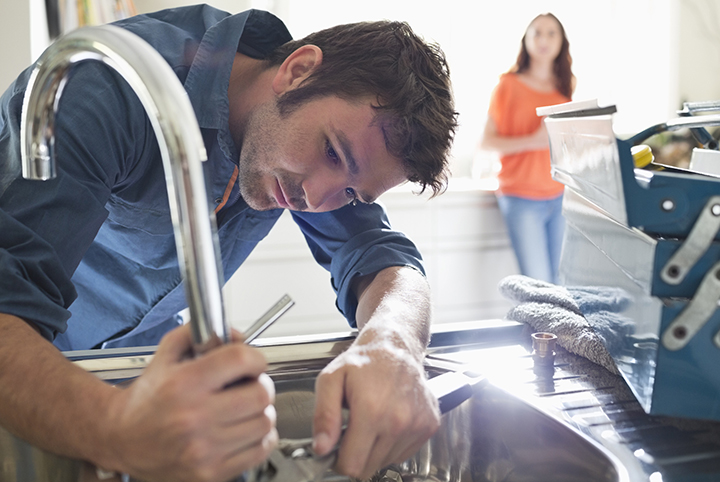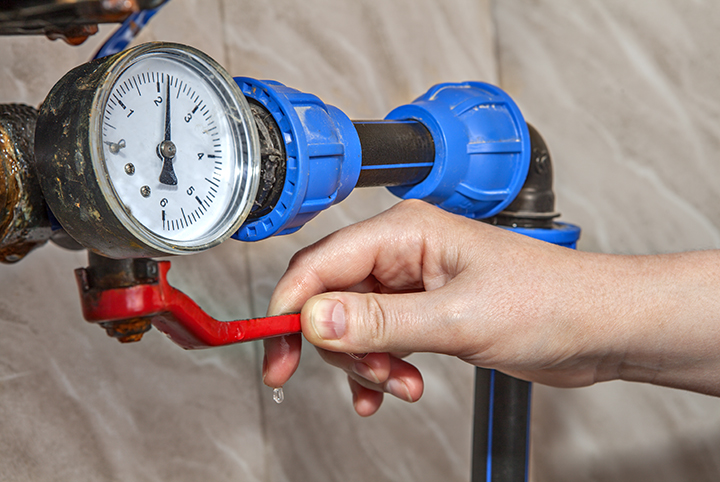
Mike Holmes is one of HGTV Canada’s go-to contractors and the host of Holmes and Holmes, Holmes: Buy it Right and Home to Win.
Water is the enemy of every home. Whenever a homeowner finds water in their home, they’ll make every effort to find the root cause as quickly as possible. You need to use common sense when determining the source of the leak. Some leaks will be easier to diagnose than others, so here are a few tips.

Roof Leaks
The older our homes get, the more they’ll start to show signs of wear and tear, and the roof is no exception. If your roof has missing shingles, it’s only a matter of time before water makes its way inside. Water leaks can often start at the top and work their way down, so if you suspect the leak is coming from your roof, you should start by calling in a professional roofer. A leaky roof is pretty straightforward for a pro to spot. They’ll know what to look for and where to trace the leak. Based on the roofer’s recommendations, you’ll be able to get the leak taken care of before any further damage is caused.

Foundation Leaks
Preventing water from reaching your home’s foundation is the best way to avoid a foundation leak, and a clogged eavestrough is one of the culprits. When eavestroughs get clogged with leaves and other debris, it prevents water from safely draining away from your home. Instead, water will collect and spill over the gutters and will get dumped right next to your foundation. Clean your gutters regularly to avoid them becoming clogged, or better yet, install a screen over top to keep the leaves and other debris out and to keep water flowing freely.
Take a look to see where your gutters discharge. Some downspouts are too close to the home, which can cause issues. I like to see gutters depositing water at least 6 feet away from the foundation.
Related: 4 Little Known Sources of Moisture to Be Aware Of

Basement Leaks
Your basement was built using concrete, which is porous, and your home’s foundation is surrounded by moist soil. Water will always follow the path of least resistance, travelling through the tiny pockets of air in the soil, finding its way into your basement through a foundation crack or through an opening in the moisture barrier. Look for wet stains on the walls or water pooling on the basement floor. Do you see signs of salt residue? This happens when water wicks through walls. If you see any of these signs, you have water leaking into your basement from somewhere.
How do you find the source of the leak? Check your landscaping – have there been any changes to your garden, patio or driveway? These types of changes can affect the water drainage around your home; even something as simple as mounding up the soil in a flowerbed close to your home can cause drainage issues. Are there any large trees near your property whose roots could be penetrating your drains? If you have considered all of these possible causes and still have water issues, you may need to excavate around the house to check the foundation and to inspect the weeping tiles. This can be a big job, so you’re better off calling in the pros to source out the leak.
Related: This is How to Frame a Basement, According to Mike Holmes

Window Leaks
Like your home’s roof, windows will start to show signs of wear and tear over time. Extreme temperatures and varying weather conditions can damage window frames and cause seals to break. Water stains or water pooling under the window is a sure sign of leaky windows. If you’re lucky, fixing the leak could be something as simple as replacing the weatherstripping or removing and replacing any damaged caulking. If the window leak is so bad that it has affected the structure around the window, it’s time to call a window professional who can advise you what windows will work best for your home, and who can make sure they’re installed properly.

Plumbing Leaks
Plumbing leaks are quite common and can lead to costly water bills. Depending on where you find water, the root cause can be anything from your dishwasher to a leaky faucet or toilet.
For dishwasher leaks, check the bottom of the unit for standing water. This can lead to a build-up of mould and mildew over time and can cause your flooring to warp. Check under the sink where the dishwasher is connected to the main drain – do you notice any discolouration or water dripping from the hose?
Faucets are prone to wear and tear over time, so pay attention to a dripping or leaky faucet. Check under sinks for signs of water leaking down onto the pipes, and look for discolouration around the fixtures themselves. Remember that shower or bathtub leaks could be a sign of something bigger going on behind the walls.
A leaking toilet can be costly to your water bills and can also damage your floors. If you suspect a leaky toilet, just add some food colouring to the water in the tank. If the water in the bowl has changed colour after an hour or so, then you’ve got a leak.
With any plumbing leaks, it’s always best to call a professional plumber to avoid any mishaps.

Supply Lines
Every homeowner should know the location of their home’s main water supply line (also called the main shut-off valve). It could save you millions of dollars if there’s ever a leak or a burst pipe. The shut-off valve looks like a metal pipe with a meter attached to it and could be located anywhere in your home, from the basement or crawl space and usually near the front of the house. In the event of a leak or a burst pipe, turn the valve clockwise to shut off the water, and then run the faucets to drain the water lines. Burst pipes often happen during the winter when the water in the pipe freezes and expands, putting the pipes under pressure (a clog can also cause a pipe to burst). Shutting off the water will stop the leak from getting worse. Your next step is to call a professional plumber.
Water leaks can be costly and sometimes you’ll need to play detective to find the cause of the leak. Hopefully, a quick fix is all that’s needed to take care of the problem but sometimes that’s not enough. Know when to call in the pros. If you’re unsure about the root cause of a leak, call a home inspector with a thermographic camera. The camera can identify areas of moisture and can be used to trace the water and identify the cause. This will take the guesswork out of it so you can tackle the leak at the right source.
Images courtesy of The Holmes Group and Getty Images
HGTV your inbox.
By clicking "SIGN UP” you agree to receive emails from HGTV and accept Corus' Terms of Use and Corus' Privacy Policy.



